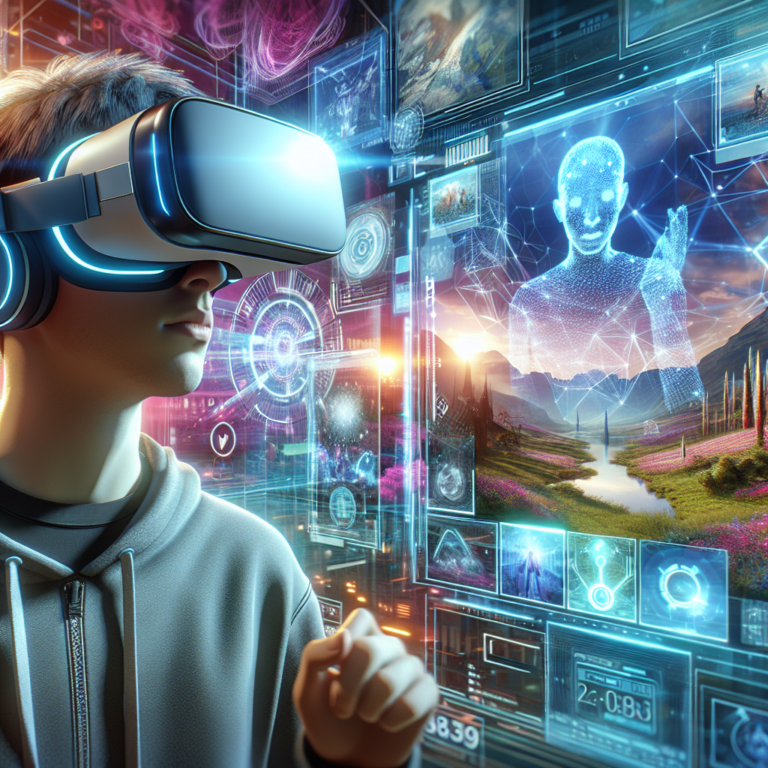Enhancing Digital Communication with Meta Avatars: The Future of Virtual Avatar Video Calls
In a notable advancement for digital communication, Meta’s recent update to Horizon OS, version v76 Public Test Channel (PTC), brings forth the capability to utilize Meta Avatars as virtual webcams in video calling applications. This groundbreaking feature marks the beginning of a new era for Virtual Avatar Video Calls, enabling users to participate in interactions that are more personal and engaging. By integrating Meta Avatars into video calls, users can now convey their emotions and ideas in a distinctive manner, whether for enjoyment or when they prefer to stay off-camera.
Understanding the Public Test Channel (PTC)
For those who might not know, the Public Test Channel is a beta testing pathway for the operating system of Meta Quest, known as Horizon OS. By enrolling in the PTC, users receive access to early software releases, allowing them to evaluate forthcoming features prior to their official deployment. This provides both developers and users the opportunity to experience new functionalities in advance, though there is no assurance that all PTC features will be included in the final stable version.
Meta Avatars as Virtual Webcams
With the launch of this feature, users are now able to perform video calls with their Meta Avatar, which mimics head movements and hand gestures based on the capabilities of the device being used. The avatar’s lip movements are estimated through audio captured from the microphone, resulting in a more realistic interaction. This innovation provides a unique method for engaging in Virtual Avatar Video Calls, particularly for those who choose not to appear on camera or wish to bring a creative flair to their conversations.
Key Features and Limitations of Virtual Avatar Video Calls
- Avatar Animation: The avatar reflects head movements and hand gestures, but does not track positional head movement, which slightly limits its expressiveness.
- Background Settings: Users have control over aspects like background images and virtual field of view, although the background image option is not fully operational as of yet.
- App Compatibility: The feature is compatible with sideloaded Android applications, but will not function within web browsers.
Benefits of Virtual Avatar Video Calls
This advancement aligns with Meta’s overarching vision to improve user interaction and self-expression across various platforms. Meta Avatars have gained popularity due to their adaptability and the way they personalize digital interactions. However, the current avatars encounter difficulties when employed on flatscreen devices, primarily due to the absence of spatial audio and shared virtual spaces, both of which are essential for immersive experiences in virtual reality settings.
Moving Toward More Lifelike Avatars
Meta is actively engaged in creating more realistic avatars, including the Codec Avatars initiative, which aims to provide an experience with photorealistic avatars. While the current avatar capability serves as a transitional phase, the future of avatar technology is bright, especially with anticipated advancements that may introduce enhanced tracking and expressive technologies.
Cross-Platform Integration
Meta Avatars are not confined to Quest devices; they extend across a broader ecosystem that includes platforms like Facebook, Instagram, and WhatsApp. Users can establish and customize their avatars across these platforms, ensuring a cohesive digital persona. This cross-platform functionality underscores Meta’s aim to unify user experiences and self-expression across diverse digital realms.
The Future of Digital Communication
The incorporation of avatars in video calls indicates a future where virtual identities will play an increasingly essential role in our interactions. As technological advancements continue, avatars are expected to evolve, fostering seamless interactions between the physical and digital realms. The prospects for this technology go beyond entertainment and social interactions, potentially transforming our methods for remote work and communication in virtual office environments.
Personalization and Digital Self-Expression
Meta Avatars grant users a broad array of customization possibilities, facilitating personal expression and creativity. From selecting hairstyles and accessories to clothing options, users can design distinct avatars that represent their personalities or try out different appearances for different contexts. This degree of personalization is fundamental to Meta’s objective of transforming avatars into flexible tools for digital expression.
Immersive Experiences with Avatars
In virtual environments like Meta Horizon Worlds, avatars are central to creating an immersive atmosphere. Users can take on their avatars to interact with others in digital spaces, nurturing a sense of community and presence. As Meta continues to invest in creating more lifelike and sophisticated avatars, the potential for these experiences to become more engaging and relatable will continue to expand.
Effects on Social Interaction
The employment of avatars in video calls can greatly alter how we view social interactions. By introducing a new level of personalization and creativity, individuals can express themselves in ways that traditional video conferencing does not allow. This could make social exchanges feel more enjoyable and engaging, especially for individuals who are shy or prefer not to show their faces.
Technological Obstacles
Despite its possibilities, this technology still encounters several hurdles. The lack of facial and eye tracking in the majority of Meta headsets (except the Quest Pro) means that the avatars’ expressions may lack nuance and realism. Furthermore, ensuring smooth compatibility across various applications and platforms can be complex. Addressing these challenges will be essential for the widespread acceptance of avatar-based video calling.
As the metaverse evolves, avatars are poised to be pivotal in redefining how we interact and communicate in digital settings. With improvements in avatar technology, virtual interactions will become increasingly intricate, providing fresh avenues for connection and self-expression in both virtual and real-world spaces. 🌐👥
Additional Resources:
Real-Time Avatar Calls for Enhanced Digital Interaction
Meta’s AI-Powered Avatar Expression Technology
The Future of VR Avatars in Digital Communication
Meta’s Vision for Avatars in the Metaverse




0 Comments